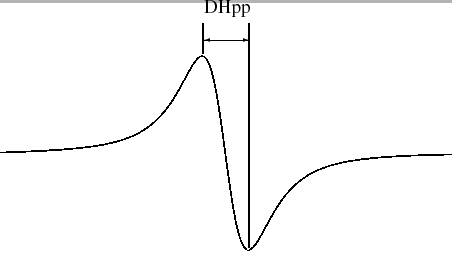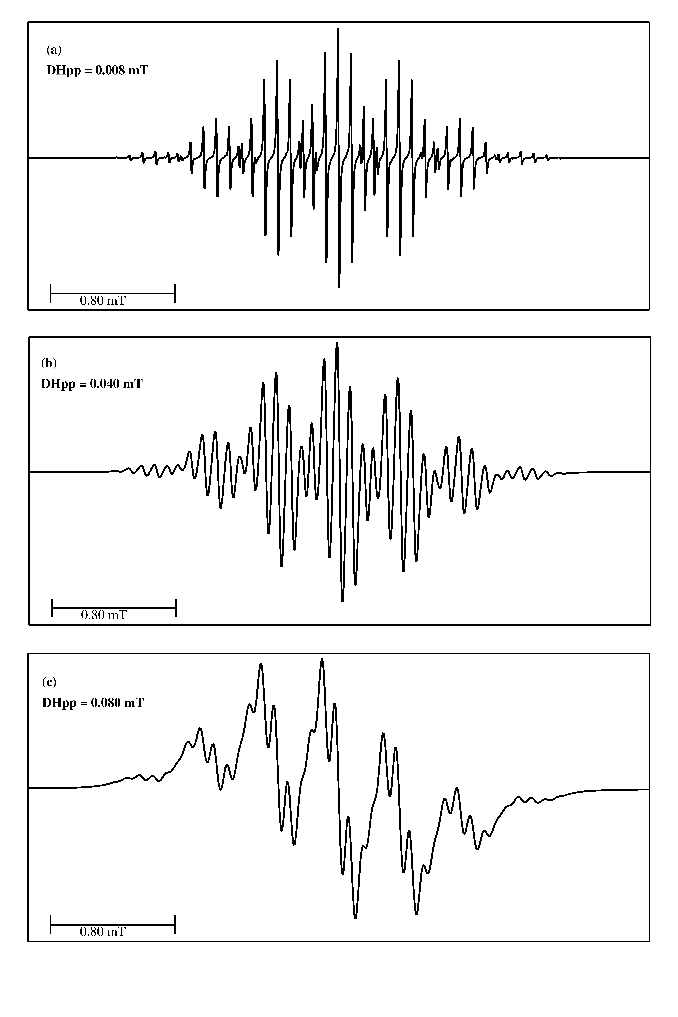



Next: B. Second-order Splitting
Up: EPR Tutorial
Previous: 8.2.11 Nitrobenzene anion radical
Contents
A. Peak to peak linewidth (DHpp)
The peak-to-peak EPR linewidth (DHpp) (Fig. 40), has an important effect on the form of the spectra.
Figure 40:
Definition of DHpp in an spectral peak.
 |
By defect the simulator takes a value of DHpp that is the tenth part of the smaller hyperfine constant,
nevertheless, sometimes this value should be adjusted so that the spectrum simulated looks like
the experimental.
The effect of the value of DHpp on the form of the spectrum is shown in Fig. 41
for a particular case.
Figure 41:
Spectrum of the 9,10-diamine anthracene cation simulated with three different values of DHpp:
a) 0.008 (default value for this radical),
b) 0.04 and
c) 0.08 mT.
 |




Next: B. Second-order Splitting
Up: EPR Tutorial
Previous: 8.2.11 Nitrobenzene anion radical
Contents
Universidad Autónoma de Madrid, Departamento de Química Física Aplicada

